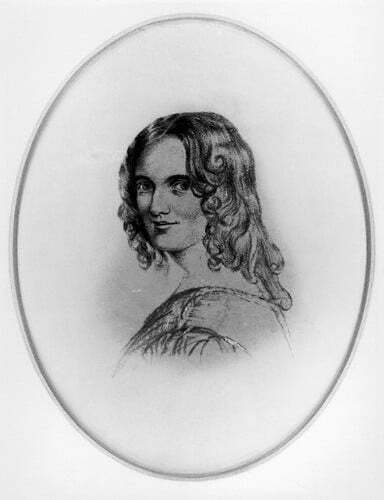Hymn History: Nearer, My God, to Thee & Author: Sarah Fuller Flower Adams
“All who knew Mrs. Adams personally speak of her with enthusiasm; she is described as a woman of singular beauty and attractiveness, delicate and truly feminine, high-minded, and in her days of health playful and high-spirited.”
(Richard Garnett)
The Origin of the Hymn “Nearer, My God, to Thee”
Few hymns in the English language have stirred as much emotion or held such a place in the hearts of believers as “Nearer, My God, to Thee.” Its tender plea for closeness to God has comforted generations in times of sorrow, tragedy, and faith. Written in the mid-19th century by Sarah Flower Adams (1805–1848) and set to music by her sister Eliza Flower (1803–1846), the hymn’s story is one of devotion, personal trial, and enduring hope.
The Writer: Sarah Flower Adams
Sarah Flower Adams was born in Harlow, Essex, England, in 1805. She grew up in a cultured and literary household—her father, Benjamin Flower, was a journalist and political reformer, and her mother came from a family of strong Nonconformist (independent Protestant) convictions. Sarah and her sister Eliza were both talented; Eliza became a noted composer, while Sarah excelled in poetry and drama.
Sarah’s literary gifts were evident early in life. She was drawn to writing verse and even tried her hand at the stage, performing in Shakespearean roles in London. But poor health forced her to abandon the theater. In 1834 she married William Bridges Adams, a railway engineer and inventor, and together they attended the Unitarian Church in South Place, London. There, Sarah and her sister Eliza became active in the congregation, contributing hymns and music for worship services led by their pastor, the Rev. William Johnson Fox.
The Inspiration for the Hymn
The hymn “Nearer, My God, to Thee” was written in 1841. Rev. Fox had asked Sarah to compose a new hymn to accompany a sermon he planned to preach on Genesis 28:10–22, the story of Jacob’s dream at Bethel. In that passage, Jacob, fleeing from his brother Esau, lays down to rest in the wilderness and dreams of a ladder reaching from earth to heaven, with angels ascending and descending upon it. When Jacob awakes, he declares, “Surely the Lord is in this place.”
Moved by this theme of divine nearness even in distress, Sarah penned words that expressed a soul’s yearning for closer communion with God—through joy, through sorrow, and even through death:
Nearer, my God, to Thee,
Nearer to Thee!
E’en though it be a cross
That raiseth me.
The hymn reflects a profound truth of Christian experience: that suffering often becomes the means by which believers are drawn nearer to God. Its language is simple and intimate, yet filled with poetic imagery—“there let the way appear, steps unto heaven,” and “angels to beckon me nearer, my God, to Thee.”
The Music: From Eliza Flower to Lowell Mason
The first musical setting for Sarah’s words was composed by her sister Eliza Flower, who wrote a tune called Bethany. However, this original melody was not widely adopted outside the South Place Chapel.
The tune most commonly associated with the hymn today—also called “Bethany”—was composed later by the American church musician Lowell Mason (1792–1872), known as one of the great figures in early American hymnody. Mason’s version, written around 1856, is the melody that gave the hymn its enduring popularity in the United States. Its rich, flowing lines and devotional character perfectly match the text’s tone of humble submission and trust.
A Hymn of Comfort and Legacy
“Nearer, My God, to Thee” soon became one of the most beloved hymns in both Britain and America. It was printed in numerous hymnals and sung at countless worship services, funerals, and memorial gatherings.
The hymn’s message of finding God even in hardship gave it universal appeal. It was said to have been sung by soldiers during the American Civil War, by missionaries in distant lands, and by those facing illness and death. It has been translated into many languages and remains a favorite across denominations.
Perhaps most famously, the hymn is associated with one of the greatest maritime tragedies in history—the sinking of the RMS Titanic in 1912. According to survivors’ accounts, as the ship was going down, the band reportedly played “Nearer, My God, to Thee.” Though historians differ on the exact tune used, the story became part of the hymn’s powerful legacy, symbolizing courage, faith, and peace in the face of death.
The Author’s Final Years
Sarah Flower Adams herself knew much of suffering. Her health, always fragile, declined after the deaths of her sister Eliza and their mother. She continued to write poetry and hymns, but her strength failed, and she died at the age of forty-three in 1848. On her tombstone in London, fittingly, are inscribed the words of her own hymn: “Nearer, my God, to Thee.”
The Hymn’s Enduring Message
Over 180 years after it was written, “Nearer, My God, to Thee” remains a timeless expression of faith. Its beauty lies not in grand theology but in heartfelt devotion. It teaches that whether life brings blessing or pain, every circumstance can draw the believer nearer to the heart of God.
From quiet worship services to moments of national mourning, this hymn continues to remind the faithful that in every trial, in every cross, there is a ladder leading heavenward—and at the top stands the Savior, waiting to welcome His children home.
Related
Sorry, no records were found. Please adjust your search criteria and try again.
Sorry, unable to load the Maps API.
